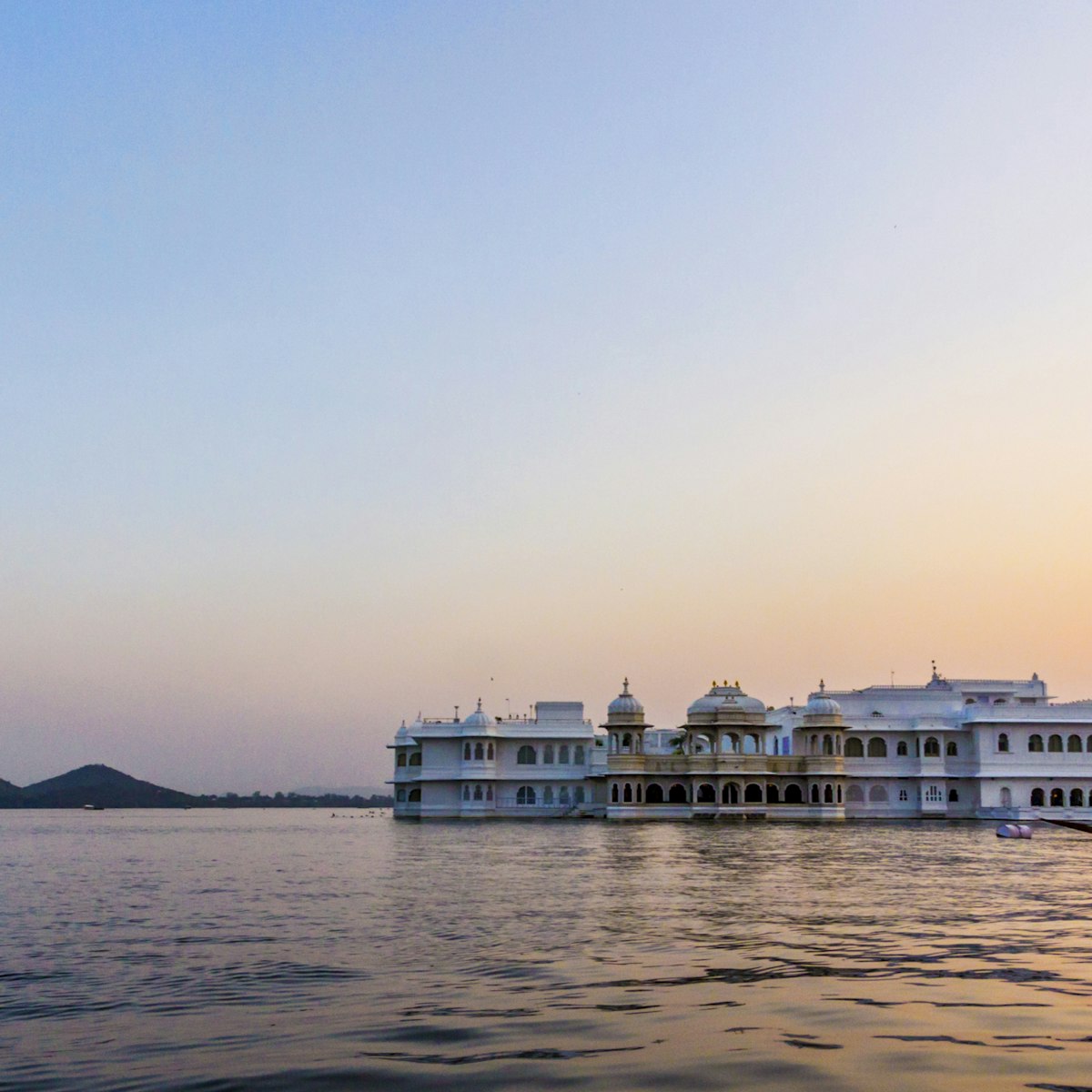The main part of the City Palace is open as the City Palace Museum, with rooms extravagantly decorated with mirrors, tiles and paintings, and housing a large and varied collection of artefacts. It’s entered from Ganesh Chowk, which you reach from Manek Chowk.
The City Palace Museum begins with the Rai Angan (Royal Courtyard), the very spot where Udai Singh met the sage who told him to build a city here. Rooms along one side contain historical paintings, including several of the Battle of Haldighati (1576), in which Mewar forces under Maharana Pratap, one of the great Rajput heroes, gallantly fought the army of Mughal emperor Akbar to a stalemate.
As you move through the palace, highlights include the Baadi Mahal (1699), where a pretty central garden gives fine views over the city. Kishan (Krishna) Vilas has a remarkable collection of miniatures from the time of Maharana Bhim Singh (r 1778–1828). The story goes that Bhim Singh’s daughter Krishna Kumari drank a fatal cup of poison here to solve the dilemma of rival princely suitors from Jaipur and Jodhpur who were both threatening to invade Mewar if she didn’t marry them. The Surya Choupad features a huge, ornamental sun – the symbol of the sun-descended Mewar dynasty – and opens into Mor Chowk (Peacock Courtyard) with its lovely mosaics of peacocks, the favourite Rajasthani bird.
The southern end of the museum comprises the Zenana Mahal, the royal ladies’ quarters, built in the 17th century. It now contains a long picture gallery with lots of royal hunting scenes (note the comic strip–style of the action in each painting). The Zenana Mahal’s central courtyard, Laxmi Chowk, contains a beautiful white pavilion and a stable of howdahs (seat for carrying people on an elephant’s back), palanquins and other people-carriers.



![[UNVERIFIED CONTENT] The grand pillared Durbar Hall of Khilwat Mubarak, Chowmahalla Palace (or Chowmahallat), Hyderabad, Andhra Pradesh, India. The Hall features the marble platform on which the Takht-e-Nishan or the royal seat was laid and 19 spectacular crystal chandeliers. Chowmahalla Palace is a UNESCO World Heritage site.](https://lp-cms-production.imgix.net/2019-06/bda5a712e370f7216b994e58a6d8eb97-durbar-hall.jpg?fit=crop&ar=1%3A1&w=1200&auto=format&q=75)




